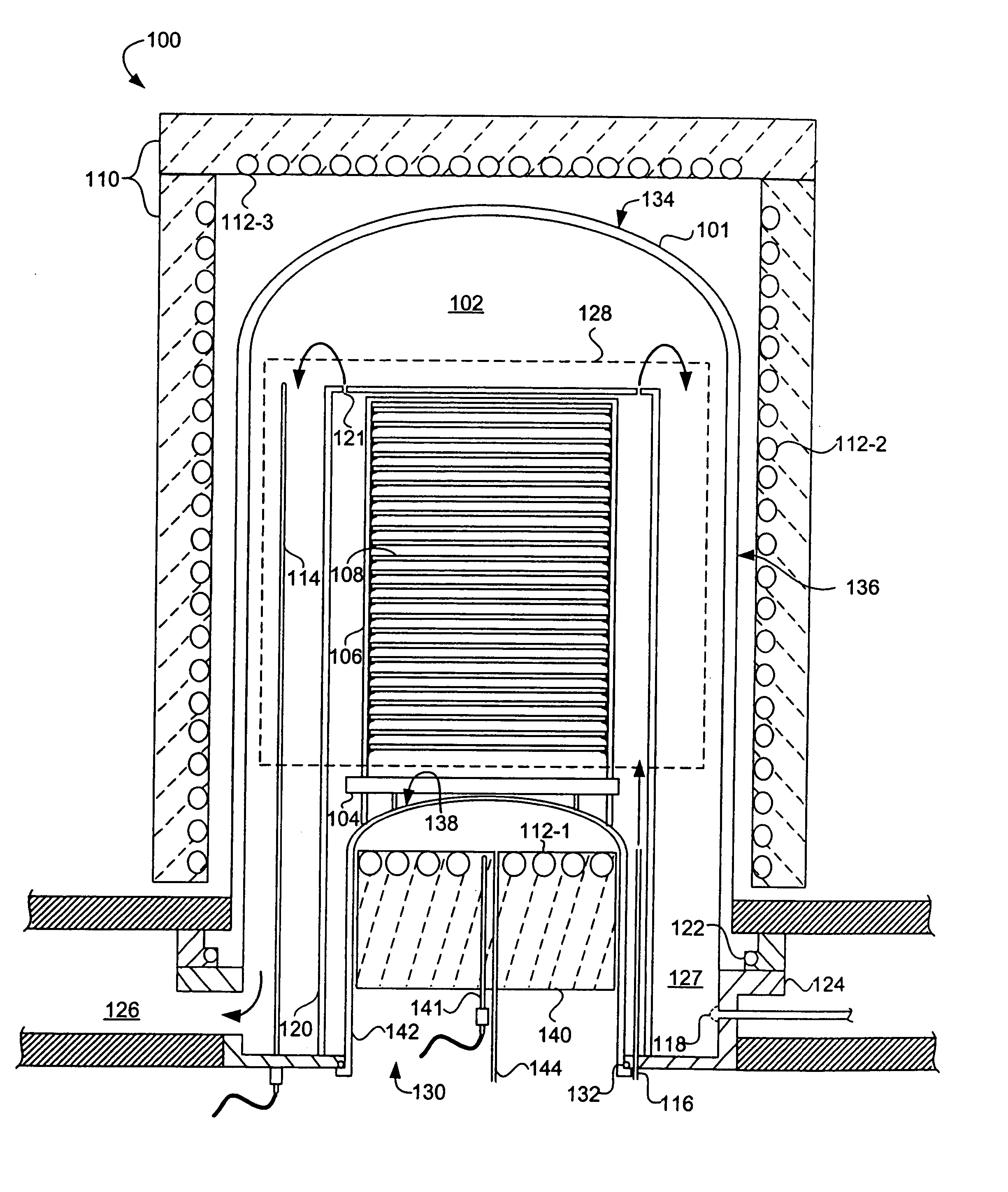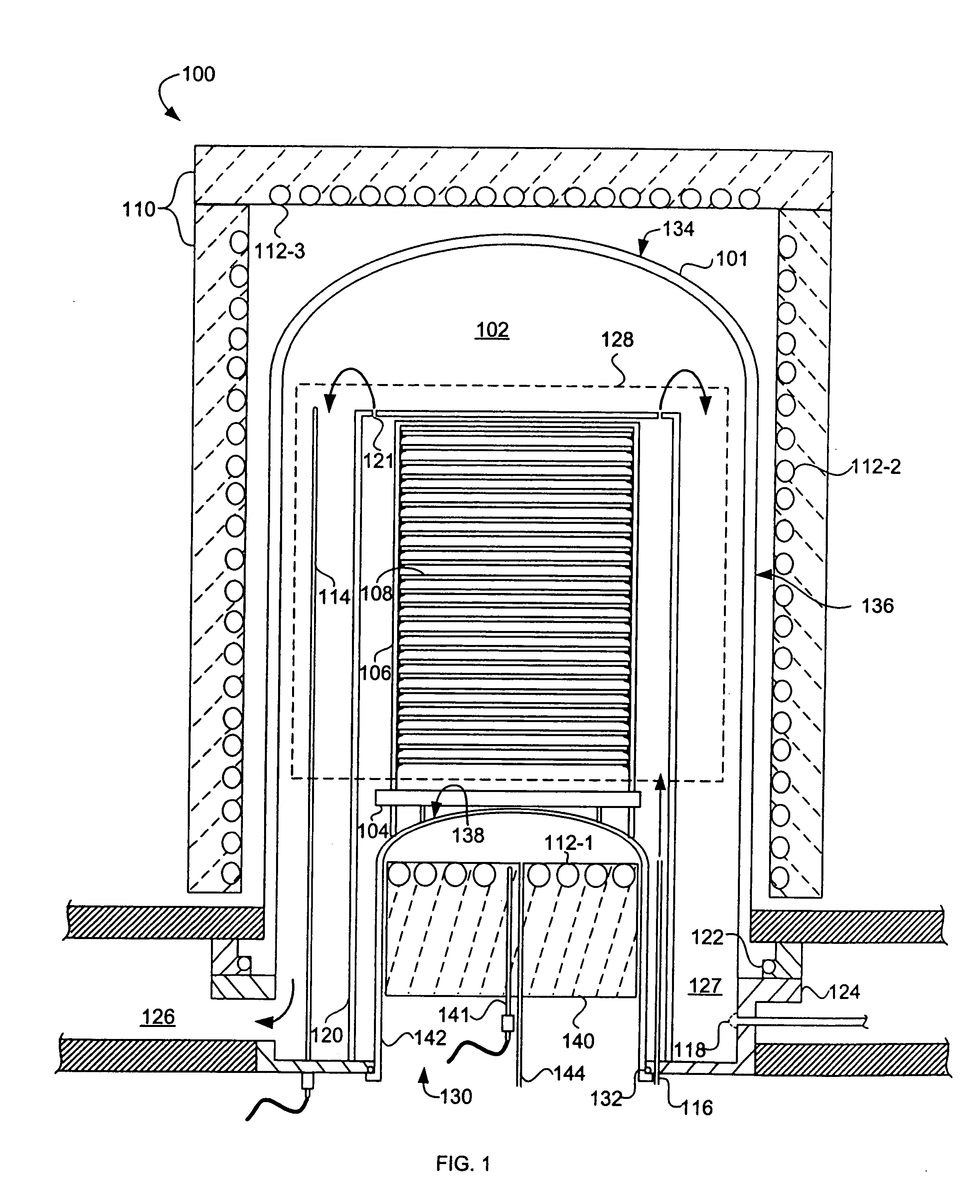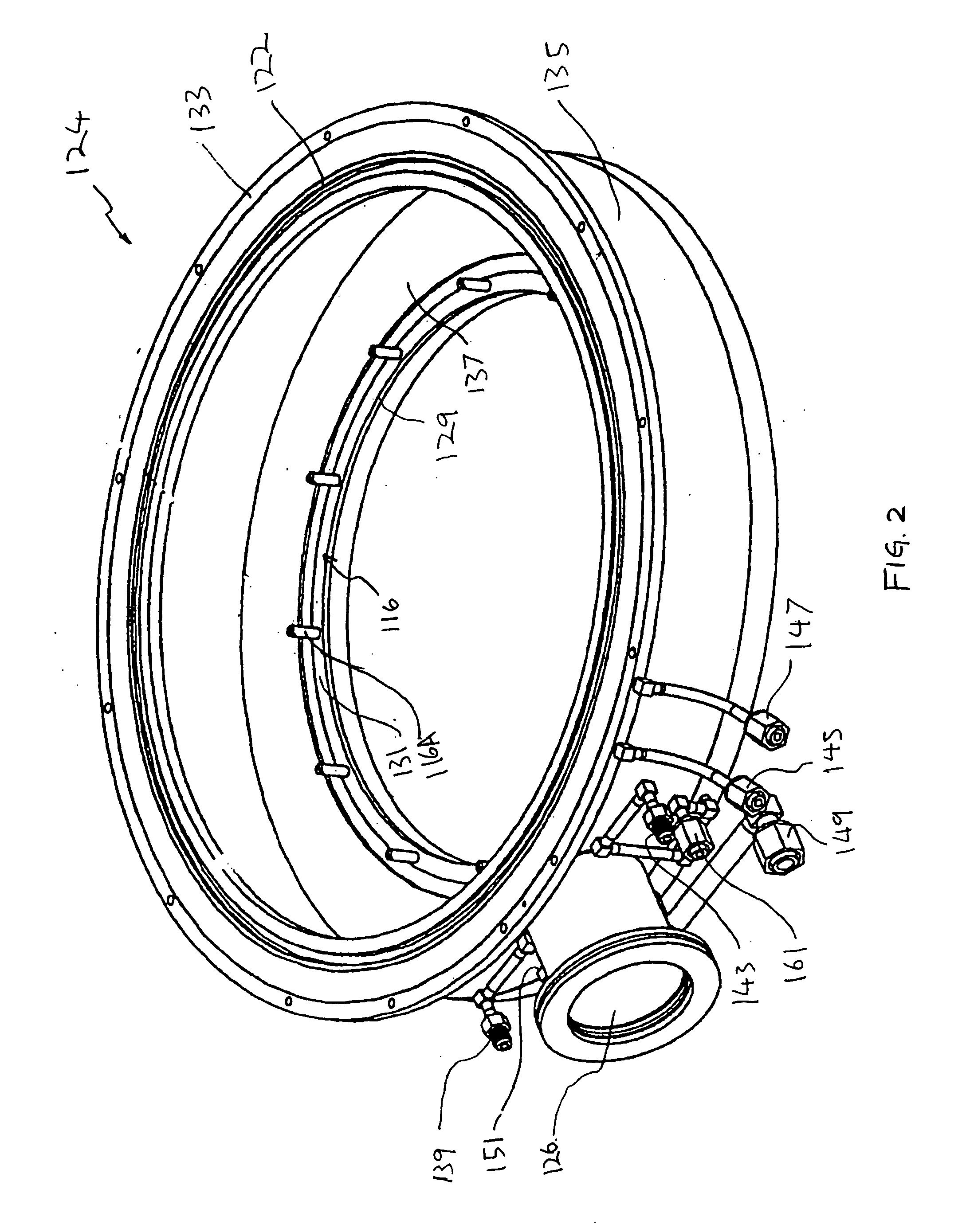Thermal Processing System and Configurable Vertical Chamber
a vertical chamber and processing system technology, applied in the direction of superimposed coating process, liquid/solution decomposition chemical coating, resistive material coating, etc., can solve the problems of increasing processing time, occupying a tremendous amount of space and power, and considerable time required both before processing
- Summary
- Abstract
- Description
- Claims
- Application Information
AI Technical Summary
Benefits of technology
Problems solved by technology
Method used
Image
Examples
Embodiment Construction
[0044] The present invention is directed to an apparatus and method for processing a relatively small number or mini-batch of one or more work pieces, such as semiconductor substrates or wafers, held in a carrier, such as a cassette or boat, that provides reduced processing cycle times and improved process uniformity.
[0045] As used herein the term “mini-batch” means a number of wafers less than the hundreds of wafers found in the typical batch systems, and preferably in the range of from one to about fifty-three semiconductor wafers or wafers, of which from one to fifty are product wafers and the remainder are non-product wafers used for monitoring purposes and as baffle wafers.
[0046] By thermal processing it is meant processes that in which the work piece or wafer is heated to a desired temperature which is typically in the range of about 350° C. to 1300° C. Thermal processing of semiconductor wafers can include, for example, heat treating, annealing, diffusion or driving of dopa...
PUM
| Property | Measurement | Unit |
|---|---|---|
| temperature | aaaaa | aaaaa |
| temperature | aaaaa | aaaaa |
| time | aaaaa | aaaaa |
Abstract
Description
Claims
Application Information
 Login to View More
Login to View More - R&D
- Intellectual Property
- Life Sciences
- Materials
- Tech Scout
- Unparalleled Data Quality
- Higher Quality Content
- 60% Fewer Hallucinations
Browse by: Latest US Patents, China's latest patents, Technical Efficacy Thesaurus, Application Domain, Technology Topic, Popular Technical Reports.
© 2025 PatSnap. All rights reserved.Legal|Privacy policy|Modern Slavery Act Transparency Statement|Sitemap|About US| Contact US: help@patsnap.com



